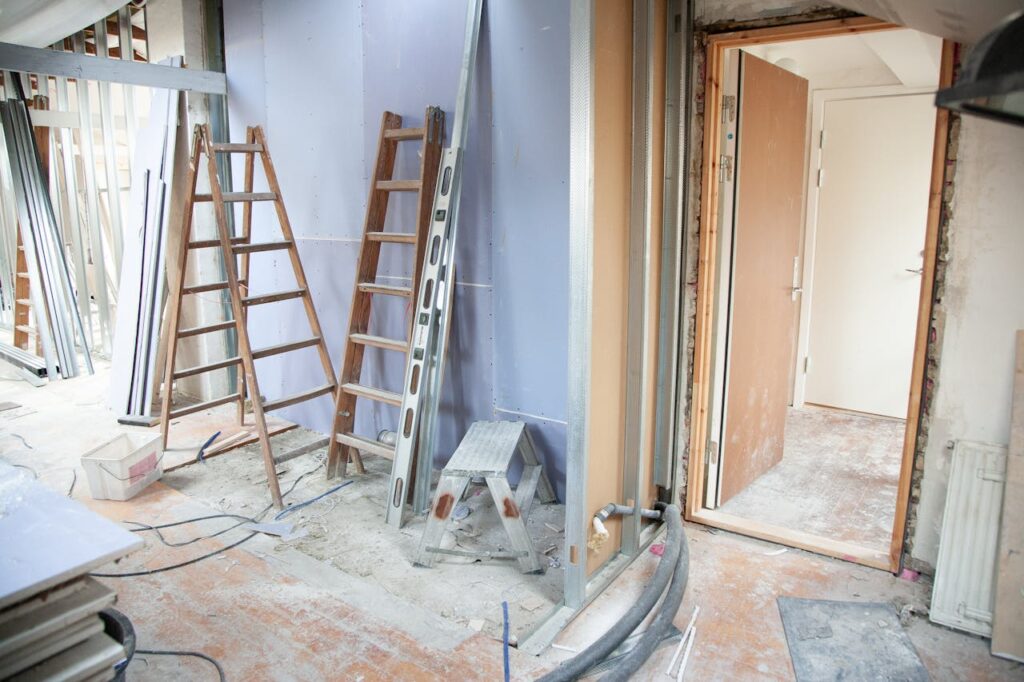Home improvements are one of the easiest ways to increase the value of your property.
Whether you’re adding a bedroom, extending a space or improving energy efficiency, these upgrades can have a strong impact on your property’s value.
However, they can be expensive – especially as they all need to be paid in cash. Here, we look at some of the best funding options for home improvements, as well as the pros and cons of each.
What is a Home Improvement Loan?
A home improvement loan unlocks the funds that property owners need to renovate, repair or upgrade their properties. As these improvements typically need to be paid in cash, these loans unlock the capital to do them.
Home improvement loans can cover things like adding rooms, renovating bathrooms, adding insulation or extensions – all of which can significantly improve a property’s value.
What Are The Different Types of Home Improvement Loans?
There are two main types of home improvement loans, these are:
Unsecured loans: Unsecured loans are things like personal loans that do not use the property as collateral. Examples of these include personal loans and credit cards.
Secured loans: Secured loans allow homeowners to use their property as collateral for the loan. The benefit of this is that they can unlock larger amounts of capital, usually at lower interest rates. Mortgages and bridging loans are common types of secured loans regularly used by investors.
Why Home Improvements Are A Smart Investment
Home improvements often add a lot of value to a property, making them a good investment. Renovations like adding an extra bedroom, updating bathrooms, or improving energy efficiency can increase resale value and make your property more desirable to buyers.
According to Nationwide, adding an extra bedroom can increase a property’s value by 15% – making it a solid investment. Additionally, with the rising cost of gas and electricity, improving a property’s EPC rating will make it stand out to potential buyers.

If you’re ready to renovate your home or an investment property, but aren’t sure about how to finance it, here are a few options:
Remortgaging
Remortgaging means replacing your current mortgage with a new one, often with a larger loan amount.
This allows you to use the equity you’ve built up in your home to release funds.
Pros: Remortgaging comes with lower interest rates than personal loans or credit cards, and you can repay them over a longer period.
Cons: This will increase your monthly mortgage payments. If you can’t pay these higher payments, you can risk losing your home. Switching mortgages mid-term can also make you liable for early repayment fees, which may combat the benefits of the lower interest.
Best for: Homeowners who have significant equity in their property and a stable monthly income to manage the higher payments.
Bridging Loans
Bridging loans are short-term loans that typically allow investors to borrow high sums of money in a very quick time frame. They are secured loans, meaning they are leveraged against a property.
Because bridging loans allow investors to access large sums of money quickly, they are great options for home improvement loans.
Pros: Bridging loans have a fast approval process, allowing you to access funds within a couple of weeks. They come with very flexible terms and can be used whilst a longer term financing option (like a mortgage) is put in place.
Cons: These loans generally come with higher interest rates due to their short repayment times. Since they are secured against property, defaulting could result in losing the asset (though this tends to be a last resort).
Best for: Investors that need quick, high-value loans with flexible terms.
Personal Loans
If the amount you need for the renovation isn’t that high, personal loans are a good option. They can be used in a number of situations, and are given by banks, credit unions and online lenders.
However, the ability to secure a personal loan depends on your income, credit score and expenses – so might not be an option to everyone.
Pros: Approval processes are generally fast, and no collateral is required. They also have fixed monthly payments, making budgeting easier.
Cons: Interest rates on personal loans can be higher than secured options, as they come with more risk. They are also unlikely to be granted if you have a bad credit score. Finally, they come with lower borrowing amounts, making them less suitable for large projects.
Best for: Smaller projects run by people with good credit scores.
Second Charge Mortgage (HELOC)
A second charge mortgage, also known as a Home Equity Line of Credit (HELOC), lets you to borrow against the value of your property without affecting your primary mortgage.
It is another type of secured loan, so comes with the risk of losing your property if you default on repayments.
Pros: Second charge mortgages give homeowners access to a high sum of funds while keeping their primary mortgage terms intact.
Cons: These loans come with higher interest rates than primary mortgages and come with additional monthly payments, meaning you need an incredibly steady source of income.
Best for: Those who have a large percentage of equity in their home and a strong financial situation that can handle the extra monthly payments.
Credit Cards
For small improvements, credit cards can give home owners quick access to funds, especially if you have low-interest and high credit amounts.
Payments can be made on credit cards instantly, and as long as you can pay back the costs monthly, you shouldn’t incur any high fees.
Pros: Credit cards come with a lot of flexibility and can be good for smaller projects that don’t need large sums of cash. If used carefully, 0% APR promotional periods can make borrowing temporarily interest-free.
Cons: High-interest rates can come into play if the balance isn’t paid off within the month. Relying on credit cards can lead to high-interest debt if not managed carefully – which could have a knock on effect on your credit score.
Best for: Quick cash for small-scale improvements. Depending on how much you can borrow, if you need a larger amount this may not be a viable option.
Choosing The Right Funding For Your Home Improvement Loan
With a whole host of financing options at your fingertips for home improvements, first start by thinking about what you need.
If you are taking on a large project, a secured loan might be better. Likewise, if it’s only small, a credit card or personal loan should do the trick.
If you need a fast and flexible solution, contact Blue Square Capital today to discuss how our bridging loans can support your home improvement plans.
Whether you’re planning to increase property value, enhance energy efficiency, or simply create a more comfortable living space, we’ll help you get the capital you need.


